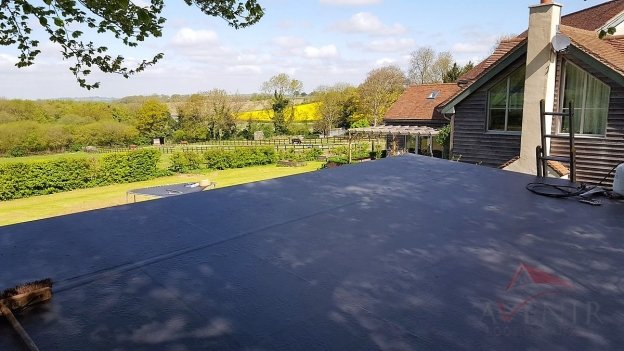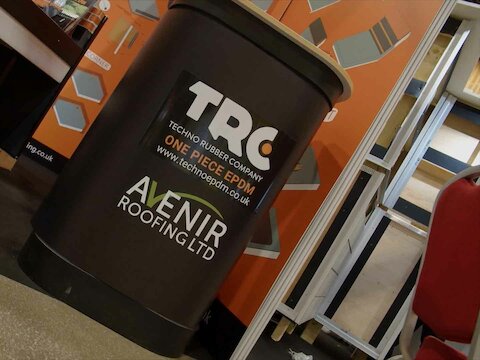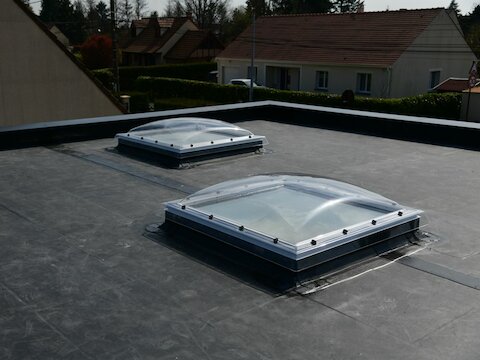The Difference Between Commercial and Residential Roofs

All roofs are different, and you’re unlikely to find two roofs that are exactly the same. With surface areas big and small, complex piping, skylights, vents and multiple areas, there are plenty of things that set roofs apart from each other. Most of the time, all of these things need to be taken into consideration when selecting the right roofing material.
The main two types of roofing are commercial and residential. At Avenir Roofing, we know that both of these types of roofing require quality materials and installation in order to perform their function and be long-lasting. But what are the differences?
Commercial VS Residential
Commercial roofing usually refers to the industrial or institutional buildings such as flats, offices, schools etc, while residential roofing refers to housing and smaller buildings in residential areas.
There are three main differences between the two roofing types:
Design
Arguably the most notable difference between the two roofing types is that the design of commercial and residential roofs is very different. Commercial roofing is more likely to be practical in design, without unnecessary extravagance. Roofs of commercial buildings need to perform their function well, putting less emphasis on aesthetics. Residential roofs often have a bit more leniency when it comes to design. Both can have complexities, so finding the correct roofing material for both is essential.
When it comes to flat or pitched roofs, commercial buildings often go for a flat design, because of the practicality of flat roofing materials today. Residential roofs are usually pitched. But, extensions, conversions and garages often make use of a flat design.
Size
Commercial roofs usually have a much larger surface area to cover, and more complexities with flashing and such. Residential flat roofs, on the other hand, tend to be more straightforward and cover a much smaller surface area.
This means that some materials are more suited to commercial roofs, and some perform better on residential roofs. However, for flat roofs, there are some materials which are highly suitable for both.
Material
Roofing materials vary on the type, cost and the weather conditions. Here are some of the most common roofing materials for both commercial and residential roofs.
- Asphalt shingles
- Metal
- Built-up Roof
- Fibreglass
- EPDM
There are usually pros and cons for all types of roofing, but one which stands out as a high-performing, cost-effective roofing type with few limitations is EPDM rubber.
Benefits of EPDM Roofing
There are many benefits of EPDM roofing which make it one of the most superior materials for flat roofing. Here are just a few of the reasons why it is a favourite for both commercial and residential roofing types:
- Easy to Work With
EPDM RubberCover is an extremely easy material to work with. It has a simple and quick installation which is flame-free, unlike many other flat roofing types. This makes it a popular choice for those who want the job done quickly and efficiently.
- Durable, Made to Last
EPDM is also extremely strong and weather resistant. It’s durability and reliability mean that it has a long life expectancy of up to fifty years and is unlikely to need repairs. It’s seam-free and can be installed in one sheet, which makes it so much less prone to leaks than flat roofing types that have multiple seams.
- Lack of Maintenance
There is little to no maintenance required for EPDM, which is helpful for both commercial and residential roofing. Once installed, all it needs is regular inspections just like any other roofing type.
- Eco-Friendly
EPDM is also considered one of the most environmentally friendly roofing types around. It’s usually made up of recycled materials and its insulating properties can help building owners save money on energy bills.
- Cost-effective
Because EPDM has such a long lifespan, it is very cost-effective because it will not need replacing for years and years. Coupled with the fact that it is inexpensive to begin with, many roofers choose EPDM to save costs.
- Suitable for Large, Small and Complex Areas
The reason why this roofing type is so popular is partly that it’s suitable for large, small and complex areas. It is resistant to thermal shock, meaning it can stretch over areas big and small and not buckle or crack.
To find out more about the Firestone RubberCover available at Avenir Roofing, take a look at our website. Read our blog for more maintenance and flat roof information and advice.




